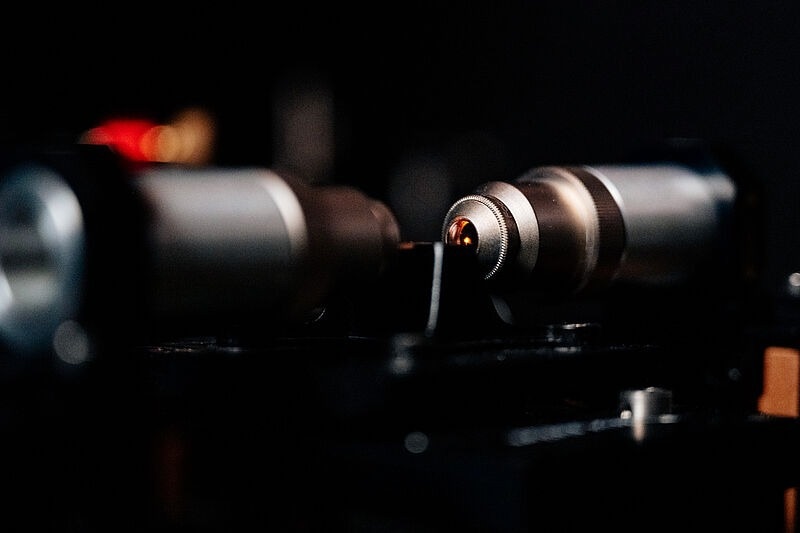Quantum computers are one of the most important technological breakthroughs of the twenty-first century.
 Paderborner Wissenschaftler entwickeln neue Technologie zur Manipulation von Licht. Image Credit: Paderborn University
Paderborner Wissenschaftler entwickeln neue Technologie zur Manipulation von Licht. Image Credit: Paderborn University
Paderborn University researchers, operating under Professor Thomas Zentgraf and in collaboration with coworkers from the Australian National University and Singapore University of Technology and Design, have created a new light manipulation technique that can be used as the foundation for future optical quantum computers.
The findings have now been published in the prestigious professional journal “Nature Photonics.”
New light-manipulating optical elements will enable more innovative applications in new information technologies, especially in quantum computers. Non-reciprocal light propagation via nanostructured surfaces, where these surfaces have been exploited at a microscopic scale, however, remains a significant challenge.
In reciprocal propagation, light can take the same path forward and backward through a structure; however, non-reciprocal propagation is comparable to a one-way street where it can only spread out in one direction.
Thomas Zentgraf, Professor, Paderborn University
Zentgraf was also the head of the working group for ultrafast nanophotonics.
Non-reciprocity is an optical property that causes light to generate different material properties when its direction is inverted. A window made of glass that is transparent on one side and allows light to pass through but acts as a reflective surface on the other side and reflects the light is one such instance. This is referred to as duality.
“In the field of photonics, such a duality can be very helpful in developing innovative optical elements for manipulating light,” says Zentgraf.
Non-reciprocal light propagation was merged with frequency conversion of laser light in an existing partnership between his working group at Paderborn University and scientists at the Australian National University and Singapore University of Technology and Design.
“We used the frequency conversion in the specially designed structures, with dimensions in the range of a few hundred nanometers, to convert infrared light—which is invisible to the human eye—into visible light,” explains Dr. Sergey Kruk, Marie Curie Fellow in Zentgraf’s group.
The studies showed that for the nanostructured surface, this transformation process occurs only in one illumination path and is suppressed in the contrary illumination direction. The frequency conversion characteristics’ duality was used to program images into a rather transparent surface.
We arranged the various nanostructures in such a way that they produce a different image depending on whether the sample surface is illuminated from the front or the back. The images only became visible when we used infrared laser light for the illumination.
Thomas Zentgraf, Professor, Paderborn University
The severity of the frequency-converted light within the visible range was still very low in their initial experiments. The next challenge is to increase efficiency even further so that less infrared light is required for frequency conversion.
The orientation control for frequency conversion in potential optically integrated circuits could be used to swap light directly with a new light or to create unique photon conditions for quantum-optical calculations effectively on a small chip.
“Maybe we will see the application in future optical quantum computers where the directed production of individual photons using frequency conversion plays an important role,” says Zentgraf.
Journal Reference:
Kruk, S. S., et al. (2022) Asymmetric parametric generation of images with nonlinear dielectric metasurfaces. Nature Photonics. doi.org/10.1038/s41566-022-01018-7.